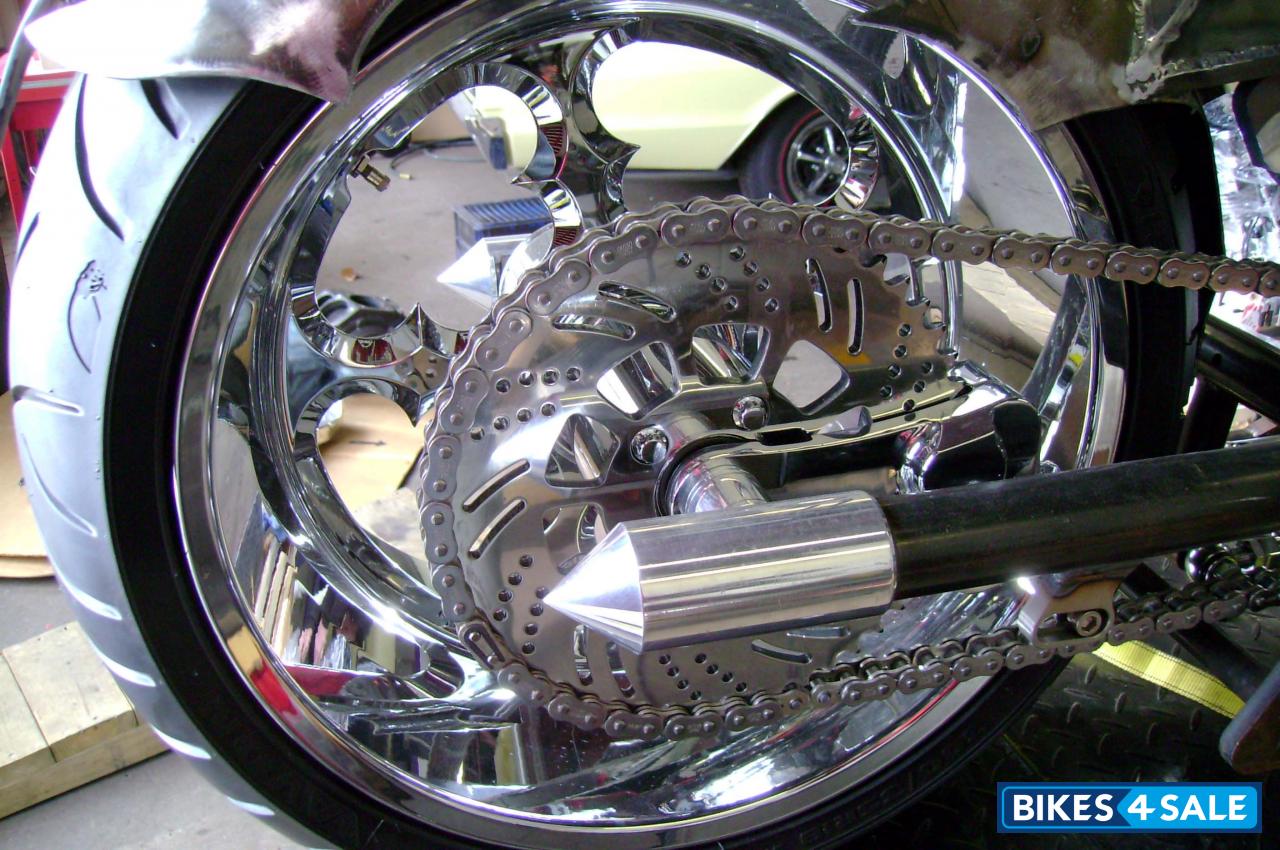Know the market value of your used bike
KMs Run
Motorcycle wheels are the circular metallic structures that receive the power from the engine and rotate to create motion. Motorcycle wheels can often be seen as metal spoked or with alloy spokes. Metal spoked rims have been in the industry for a long time and have been sighted on prestigious motorcycles like the Harley Davidson, the Norton's and so on. Steel and Aluminum are the most commonly used metals on such wheels. It was only recently that manufacturers began to rely on alloyed wheels that offered strength and durability but with a lower weight. They have the ability to also be redesigned to make the wheels more appealing. After-market alloy wheels have gained much popularity among avid bikers as they give the opportunity to make the bike look exactly how they want it.
Steel and Aluminium Wheels: Motorcycle wheels were commonly made with steel and involved spokes which added to the strength of the wheel. This construction makes the wheel heavy. Cafe Racers use steel wheels and adds to the looks of the bike. Although the wheels maybe strong, the overall weight is undesirable in terms of performance and handling. Added weight means larger effort to get the bike going. In terms of handling, the weight of the wheel itself will prove to be an undermining factor while manoeuvring turns or corners. Besides, safety is another important aspect to be looked at. Such wheels are heavy and large enough that they need extra stopping power to come to a halt and so, high speeds are not recommended on cast steel wheels.

Alloy Wheels: Alloy wheels are made by a combination of alloys of mainly aluminium and magnesium. An alloy is a combination of metals and elements and the product obtained can be highly desirable. Alloy wheels can be cast into the required shape and adds to the appeal. They also help in handling and performance of the bike or vehicle. Magnesium wheels were first used for racing but now finds use in the normal street going vehicles.
Forged Aluminium and Magnesium wheels: A new series of wheels that are lighter and stronger compared to the outgoing wheels. Casting method (process used to make wheels) uses molten metal to be poured into a mould which is then cooled down and finished to get the resulting product. However, when it comes to forging, the metal itself is shaped to requirements using compressive forces. Casting creates a number of metallurgical defects to be formed during the process and creates a less stronger product than that done by Forging. Also, forging is economical compared to forging and responds well to heat treatment. Such wheels find use on the track and the light-weight performance wheels gives better lap times as handling is improved and time is saved while moving across corners and curves.
Performance wheels are light-weight and find use on tracks, they however, cannot be brought on to the streets because damage is severely imminent.
While manufacturing performance wheels, certain factors need to be looked at:
1. Decrease rotational inertia - Rotational inertia is a property of an object. It is the resistance of a body to change in rotational velocity. The higher the moment of inertia, the higher the resistance to change.
2. Reduce Unsprung Mass - the weight of the entire wheel. The aim here is to distribute the weight proportionally so as to achieve better traction and reduces uneven tire wear
3. Reducing Gyroscopic inertia - the resistance offered by the object against change in direction
Maintaining a balance between these factors enables the manufactured wheel to be put to optimum use and can yield impressive results. Performance coupled with durability is the way to go. In the modern times, however, carbon fibre and composite wheels have become popular in the racing world although they can cost a fortune to own a set. These wheels offer extreme performance and handling capabilities and severely reduce lap times.
Go back to Motorcycle Knowledge Base
Get the best price for your old bike. Sell your bike at the Largest Used Bike Market.
